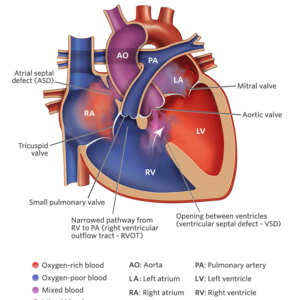Description
Familiarity with treatment
Buccal mucosa vaginoplasty is a surgical procedure used for vaginal reconstruction in individuals with vaginal agenesis or other conditions requiring vaginal reconstruction. The procedure involves using autologous buccal mucosa, which is the tissue lining the inside of the mouth, to create a neovagina.
Here is a general overview of the procedure based on the information from the search results:
Patient evaluation and preparation: Before the surgery, a thorough evaluation of the patient’s medical history and physical examination is conducted. The patient’s suitability for the procedure is assessed, and any necessary preoperative tests are performed.
Surgical technique: The surgical technique for buccal mucosa vaginoplasty involves harvesting a graft of buccal mucosa from the inside of the patient’s mouth. The buccal mucosa graft is then used to create the lining of the neovagina.
Graft preparation: The harvested buccal mucosa graft may be minced or fenestrated, depending on the specific technique used. The graft is prepared to ensure proper placement and healing within the neovagina.
Creation of the neovagina: The surgical team creates a space for the neovagina by dissecting the area where the vagina should be. The prepared buccal mucosa graft is then placed in this space to form the lining of the neovagina.
Closure and healing: The surgical site is closed, and the patient’s body is allowed to heal. The buccal mucosa graft integrates with the surrounding tissues and forms the lining of the neovagina.
Postoperative care: After the surgery, the patient undergoes postoperative care, which may include pain management, wound care, and follow-up appointments to monitor healing and address any potential complications.
Who is it suitable for?
Buccal mucosa vaginoplasty is suitable for individuals with vaginal agenesis or other conditions requiring vaginal reconstruction. It is commonly used in cases where other options, such as perineal skin flaps or intestinal vaginoplasty, may not be suitable or desired.
Based on the information from the search results, buccal mucosa vaginoplasty has been performed in patients with conditions like vaginal agenesis, cloacal anomaly, mosaic Turner syndrome, postradiation vaginal stenosis, and complete androgen insensitivity syndrome. It has been used successfully to create a functional neovagina with good vaginal length and caliber, satisfactory sexual function capacity, and well-healed buccal mucosa.
The use of buccal mucosa for vaginoplasty offers certain advantages, such as its similarity to normal vaginal tissue in terms of natural lubrication and the absence of visible scars. It is also associated with good cosmetic results and does not require invasive bowel surgery like intestinal vaginoplasty.
Who is it not suitable for?
Based on the information from the search results, buccal mucosa vaginoplasty may not be suitable for everyone. Here are some factors that may make buccal mucosa vaginoplasty less suitable:
Limited tissue availability: The amount of buccal mucosa available for grafting is relatively small compared to other tissues used in vaginoplasty procedures. This limited tissue availability may make buccal mucosa vaginoplasty less suitable for individuals who require a larger amount of tissue for vaginal reconstruction.
Concerns about side effects: Some individuals may have concerns about potential side effects or complications associated with using buccal mucosa as a graft material. These concerns may include issues related to the mouth and cheek, as well as the long-term effects on oral health and function.
Lack of experience: The search results mention that the inside of the mouth is not an area most gynecologists are used to working on. This suggests that the availability of surgeons experienced in performing buccal mucosa vaginoplasty may be limited, which could impact its suitability for some individuals.
Advantages
Based on the information from the search results, buccal mucosa vaginoplasty offers several advantages. Here are some of the advantages mentioned:
Good anatomical and functional outcomes: Buccal mucosa vaginoplasty has been associated with good anatomical success, resulting in a functional neovagina with satisfactory vaginal length and caliber 1. This can contribute to improved sexual function capacity and overall well-being.
Cosmetic results: The use of buccal mucosa as a graft material can lead to good cosmetic results. The color and texture of buccal mucosa are similar to vaginal tissue, providing a natural appearance 2.
Lack of hair and mild mucous production: Buccal mucosa is a hairless tissue that does not produce excessive mucus. This can be advantageous compared to other graft options, such as perineal skin flaps, which may have hair growth or increased mucus production.
Robust vascularity and elasticity: Autologous buccal mucosa has been recognized for its robust vascularity and elasticity, making it a suitable graft material for vaginal reconstruction 3. These characteristics contribute to the successful integration of the graft and the overall functionality of the neovagina.
Avoidance of invasive bowel surgery: Unlike intestinal vaginoplasty, which involves invasive bowel surgery, buccal mucosa vaginoplasty offers the advantage of avoiding such procedures 4. This may be particularly beneficial for individuals who prefer to avoid intestinal surgery or have specific concerns related to it.
Complications
Based on the information from the search results, complications associated with buccal mucosa vaginoplasty appear to be relatively rare. However, it’s important to note that the available information is limited and the long-term outcomes and potential complications of the procedure require further evaluation. Here are some complications mentioned in the search results:
Postoperative vaginal bleeding: One of the search results mentioned a case where a patient encountered postoperative vaginal bleeding. However, the frequency and severity of this complication were not specified 1.
Urinary bladder injury: Another search result mentioned a case where a patient suffered from urinary bladder injury. The details and severity of this complication were not provided.
preoperative care
Preoperative care for buccal mucosa vaginoplasty may involve several considerations to ensure the best possible outcomes. While the search results did not provide specific preoperative care instructions for buccal mucosa vaginoplasty, here are some general aspects that may be relevant:
Medical evaluation and assessment: Before undergoing buccal mucosa vaginoplasty, a thorough medical evaluation is typically conducted. This evaluation may include a review of medical history, physical examination, and any necessary laboratory tests or imaging studies. The purpose is to assess the individual’s overall health and identify any potential risk factors or contraindications.
Discussion of expectations and goals: It is important for the individual to have a detailed discussion with the healthcare professional or surgeon performing the procedure. This discussion should involve a clear understanding of the individual’s expectations, goals, and desired outcomes from the surgery. It allows for realistic expectations to be set and ensures that the procedure aligns with the individual’s needs and desires.
Informed consent: Informed consent is a crucial part of the preoperative process. The healthcare professional or surgeon should provide detailed information about the procedure, including its benefits, potential risks, and possible complications. The individual should have an opportunity to ask questions and fully understand the implications of undergoing buccal mucosa vaginoplasty before providing informed consent.
Preparation for surgery: Preoperative instructions may include guidelines on fasting before the surgery, discontinuation of certain medications or supplements that could interfere with the procedure or recovery, and proper hygiene practices. The healthcare professional or surgeon will provide specific instructions tailored to the individual’s needs.
Psychological evaluation and support: Given the nature of the procedure and its potential impact on the individual’s well-being, a psychological evaluation may be recommended. This evaluation helps assess the individual’s mental health, emotional readiness, and ability to cope with the surgical process and potential postoperative changes. Psychological support may also be provided throughout the preoperative period.
Postoperative care
Postoperative care for buccal mucosa vaginoplasty is crucial for proper healing and optimal outcomes. While the search results did not provide specific postoperative care instructions for buccal mucosa vaginoplasty, here are some general aspects that may be relevant:
Wound care and hygiene: Proper wound care is essential to prevent infection and promote healing. The healthcare professional or surgeon will provide instructions on how to clean the surgical site, apply any necessary dressings, and maintain good hygiene. It is important to follow these instructions carefully to minimize the risk of complications.
Pain management: Pain and discomfort are common after surgery. The healthcare professional may prescribe pain medications or recommend over-the-counter pain relievers to manage postoperative pain. It is important to take the medications as prescribed and report any severe or persistent pain to the healthcare team.
Activity restrictions: The healthcare professional or surgeon may provide guidelines on activity restrictions during the initial recovery period. This may include avoiding strenuous activities, heavy lifting, or sexual intercourse for a certain period of time. Following these restrictions is important to allow proper healing and minimize the risk of complications.
Follow-up appointments: Regular follow-up appointments with the healthcare professional or surgeon are typically scheduled to monitor the healing process and address any concerns or complications that may arise. It is important to attend these appointments and communicate any changes or issues experienced during the recovery period.
Dilation: Dilation is an important aspect of postoperative care for buccal mucosa vaginoplasty. The healthcare professional or surgeon will provide instructions on how to perform dilation exercises to maintain the depth and caliber of the neovagina. Dilators of various sizes may be used, and the frequency and duration of dilation exercises will be determined by the healthcare team.




Reviews
There are no reviews yet.